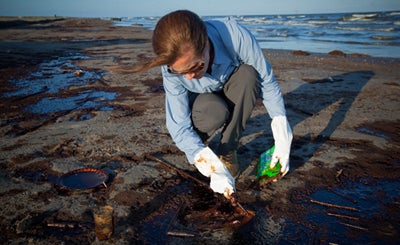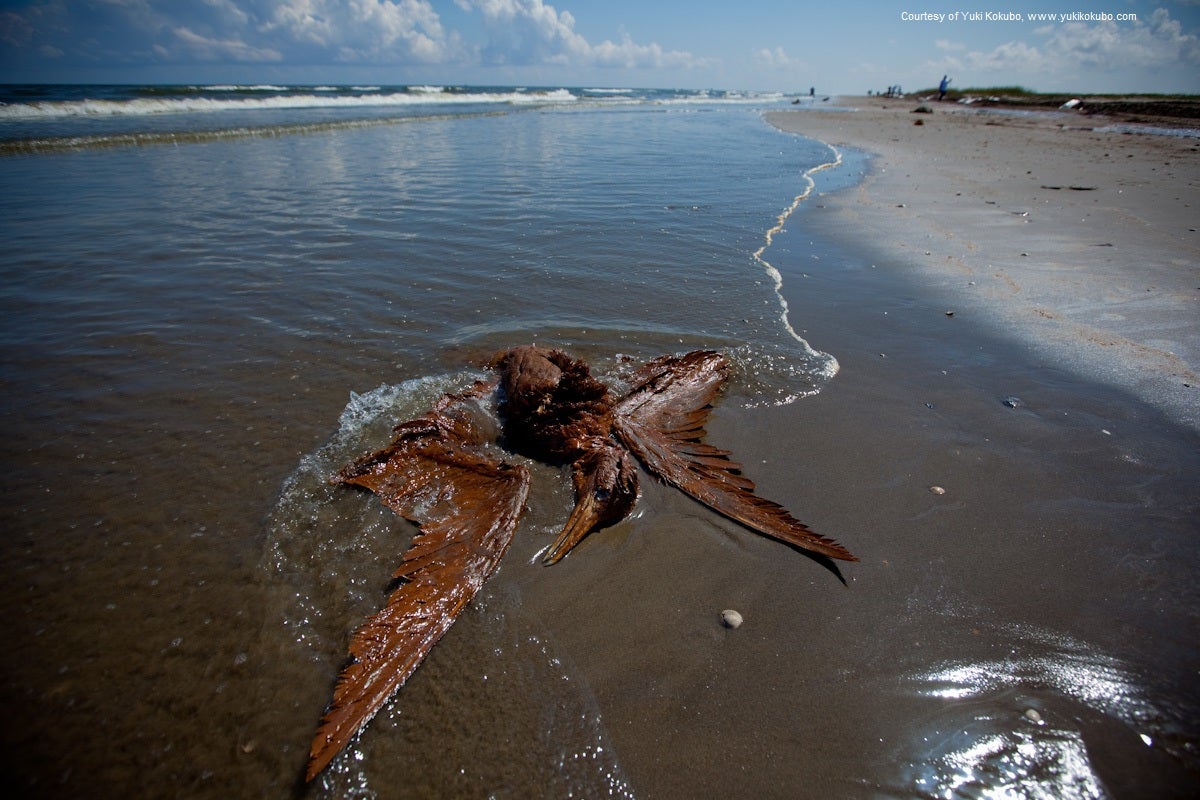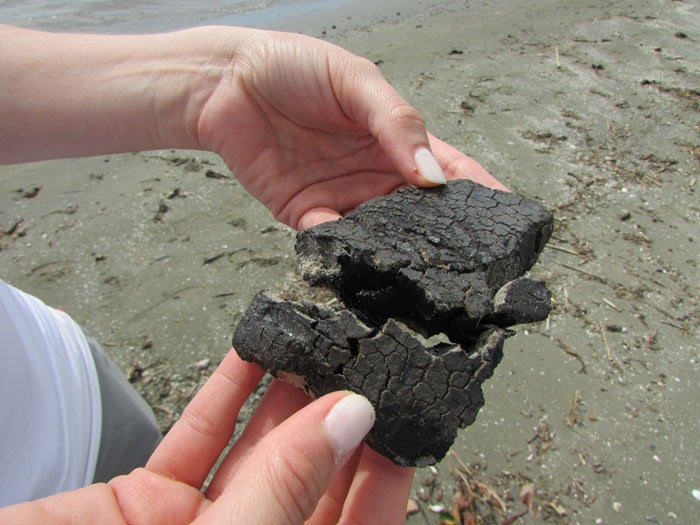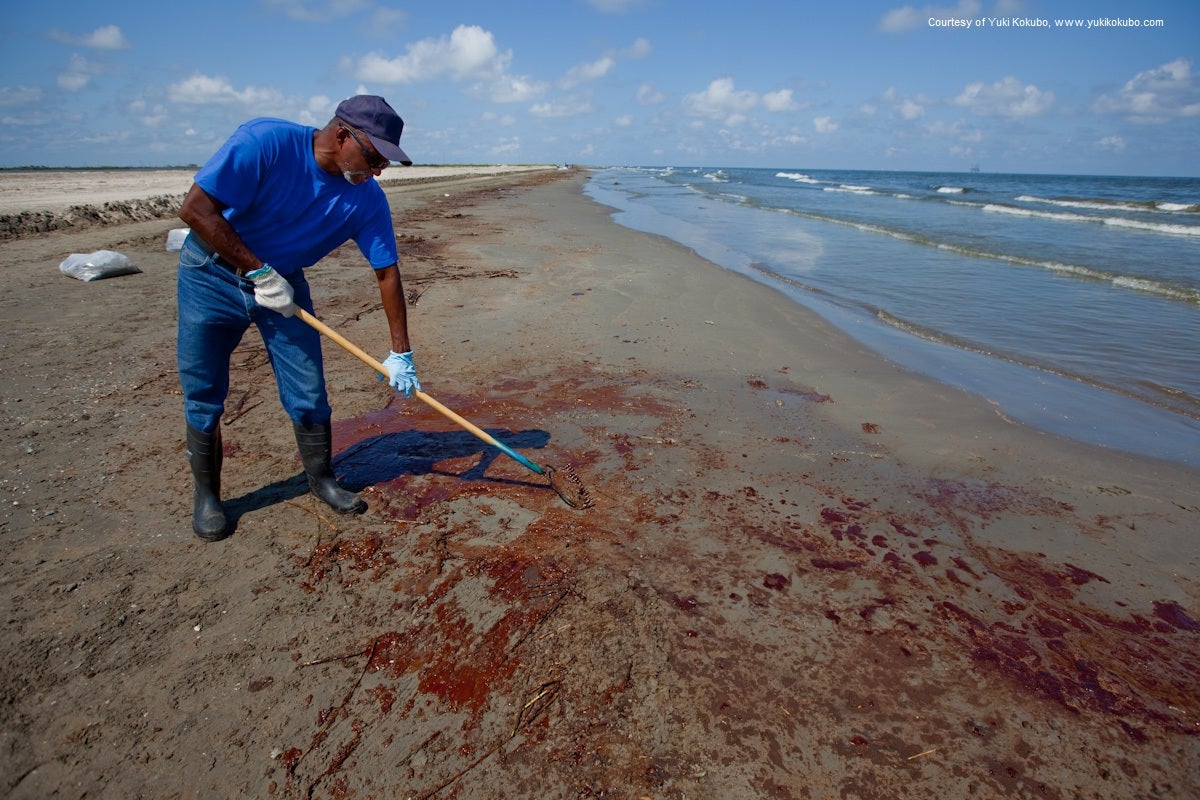 Background
Background
On April 20, 2010, BP’s Deepwater Horizon oil rig exploded, killing 11 men and dumping nearly 5 million barrels of oil—the equivalent of over 200 million gallons—into the Gulf of Mexico. The five Gulf states suffered hundreds of miles of oiled coastline, with Louisiana’s coast and wildlife receiving the greatest percentage of direct ecological damage.
In April 2016, a federal judge approved the settlement between the U.S. Department of Justice and BP for natural resource injuries stemming from the spill. This settlement included the largest civil settlement ever awarded. Under this agreement, BP will pay $20.8 billion for restoration to address injuries to the Gulf ecosystem.

Environmental Effects
Even more than six years after the incident, the disaster’s long-term effects are still unfolding. Damage done to animals and plants will have a rippling effect through the food web for years to come. Hydrocarbons from the crude oil remain in the Gulf of Mexico habitats and waters and will linger in some places for many years. The catastrophe further damaged ecosystems that were already compromised and collapsing, especially in the Mississippi River Delta and across coastal Louisiana.
Additional ecosystem and wildlife impacts include:
- A 2016 NOAA study found a large number of dead dolphins in heavily oiled places, including Barataria Bay, La.
- A 2014 study found evidence of a 1,250-square-mile area of oil contamination on the ocean floor around the Macondo wellhead in deep Gulf sediments.
- Studies estimate 800,000 birds died as a result of being exposed to BP oil.
- Modeling for a recent stock assessment projected that between 20,000 and 60,000 Kemp’s ridley sea turtles died in 2010 as a result of the spill.
- A 2014 study found concentrations of PAH (polycyclic aromatic hydrocarbon) – which can cause harmful effects in many birds, fish and wildlife – in Barataria and Terrebonne marshes, which may persist for decades.
- A 2012 study found that oiled marshes in Barataria Bay eroded at double the rate of non-oiled marshes.
- A 2015 survey found that 70 percent of Americans believed BP should pay maximum fines under the Clean Water Act for its role in the 2010 Gulf oil spill.

Ongoing Response and Recovery
Restoring the Gulf Coast means making it better than it was before the spill. Different mechanisms are in place to ensure that happens, and that a significant portion of the fines BP and other responsible parties must pay will be invested in restoration of the areas damaged by the spill.
Natural Resource Damage Assessment (NRDA)
In the NRDA process, Trustees (government officials acting on behalf of the public) evaluate recreational opportunities lost as a result of the spill and injuries to natural resources like fish, birds, sea turtles, marine mammals and nearshore ecosystems. The Trustees assessed the type and amount of restoration needed in order to return the Gulf to its original condition and to compensate the public for the natural resource services that were injured or lost. The Gulf oil disaster NRDA was the largest one ever done.
One year after the spill, in 2011, BP agreed to provide up to $1 billion for early restoration projects under NRDA. Public meetings and thousands of comments from Gulf citizens helped form the early restoration phase and allowed Gulf restoration to begin sooner.
In October 2015, the Trustees released an ecosystem restoration plan to address impacts from the spill. The draft plan allocated up to $8.8 billion for restoration from a proposed settlement with BP. Learn more about NRDA funding for Gulf restoration.
The RESTORE Act
The bipartisan Resources and Ecosystems Sustainability, Tourist Opportunities, and Revived Economies of the Gulf Coast States Act (RESTORE Act) dedicates 80 percent of the civil penalties paid by BP and others responsible for the 2010 oil disaster toward Gulf restoration. The RESTORE Act established the Gulf Coast Ecosystem Restoration Council and designated that the penalty money be deposited into a Gulf Coast Restoration Trust Fund, which will be allocated according to the following framework:
- 35 percent equally divided among the five Gulf states for ecological restoration, economic development and tourism promotion;
- 30 percent plus interest managed by the RESTORE Council for ecosystem restoration under the Comprehensive Plan;
- 30 percent divided among the Gulf states according to a formula to implement state expenditure plans, which require approval of the Council;
- 2.5 percent plus interest for the Gulf Coast Ecosystem Restoration Science, Observation, Monitoring and Technology Program within the Department of Commerce’s National Oceanic and Atmospheric Administration (NOAA); and
- 2.5 percent plus interest allocated to the States for Centers of Excellence Research grants, which will each focus on science, technology and monitoring related to gulf restoration.
Learn more about the RESTORE Act and RESTORE Council at restorethegulf.gov